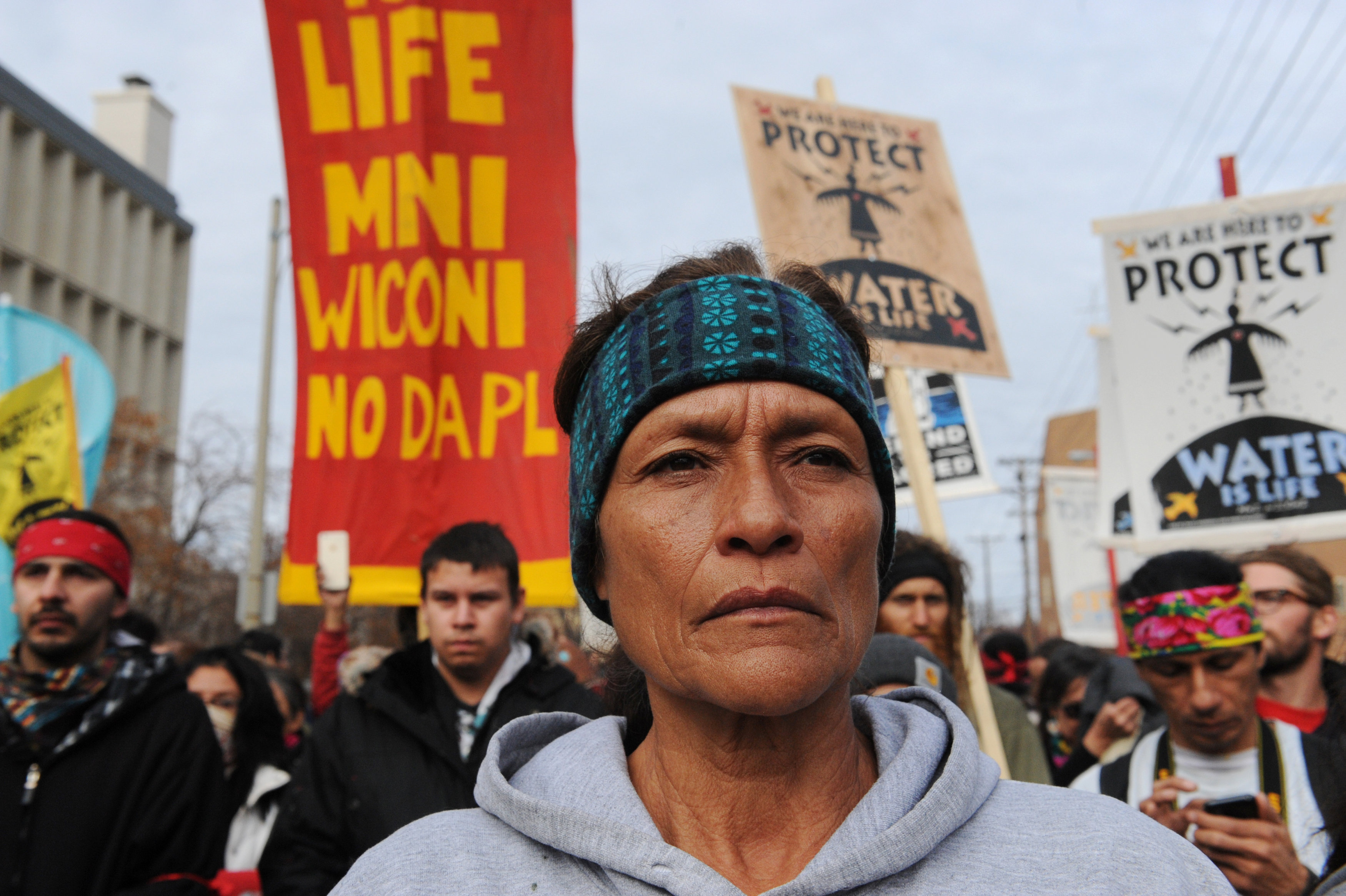
By Chris Michaud
(Reuters) – Hundreds of protesters opposed to a North Dakota oil pipeline project they say threatens water resources and sacred tribal lands clashed with police who fired tear gas at the scene of a similar confrontation last month, officials said.
An estimated 400 protesters mounted the Backwater Bridge and attempted to force their way past police in what the Morton County Sheriff’s Department described as an “ongoing riot,” the latest in a series of demonstrations against the Dakota Access Pipeline.
A media statement from the agency said one arrest had been made by 8:30 p.m. local time (0230 GMT Monday), about 2 1/2 hours after the incident began some 45 miles (30 miles) south of Bismark, the North Dakota capital.
The Backwater Bridge has been closed since late October, when activists clashed with police in riot gear and set two trucks on fire, prompting authorities to forcibly shut down a protesters encampment nearby.
The Morton County Sheriff’s Department said officers on the scene of the latest confrontation were “describing protesters’ actions as very aggressive.”
Demonstrators tried to start numerous fires as they attempted to outflank and “attack” law enforcement barricades, the sheriff’s statement said.
Police said they responded by firing volleys of tear gas at protesters in a bid to prevent them from crossing the bridge.
Activists at the scene reported on Twitter that police were also spraying protesters with water in sub-freezing temperatures and firing rubber bullets, injuring some in the crowd.
Police did not confirm the use of rubber bullets or water.
The clashes began after protesters removed a truck that had been on the bridge since Oct. 27, police said. The North Dakota Department of Transportation closed the Backwater Bridge due to damage from that incident.
The $3.7 billion Dakota Access project has been drawing steady opposition from Native American and environmental activists since the summer.
Completion of the pipeline, set to run 1,172 miles (1,185 km) from North Dakota to Illinois, was delayed in September so federal authorities could re-examine permits required by the Army Corps of Engineers.
Plans called for the pipeline to pass under Lake Oahe, a federally owned water source, and to skirt the Standing Rock Sioux Reservation by about half a mile. Most of the construction has otherwise been finished.
The Standing Rock tribe and environmental activists say the project would threaten water supplies and sacred Native American sites and ultimately contribute to climate change.
Supporters of the pipeline, owned by Energy Transfer Partners, said the project offers the fast and most direct route for bringing Bakken shale oil from North Dakota to U.S. Gulf Coast refineries and would be safer than transporting the oil by road or rail.
(Reporting by Chris Michaud in New York; Editing by Steve Gorman and Paul Tait)










